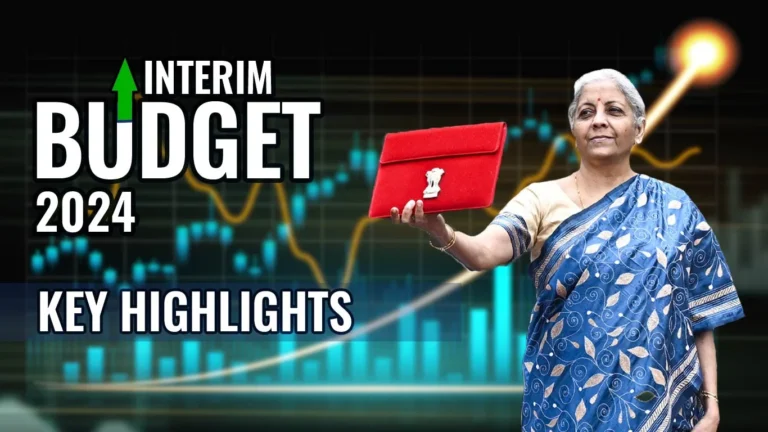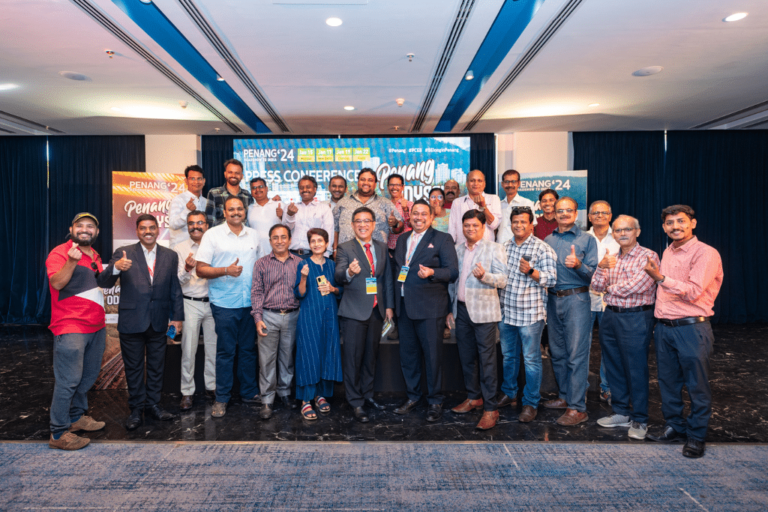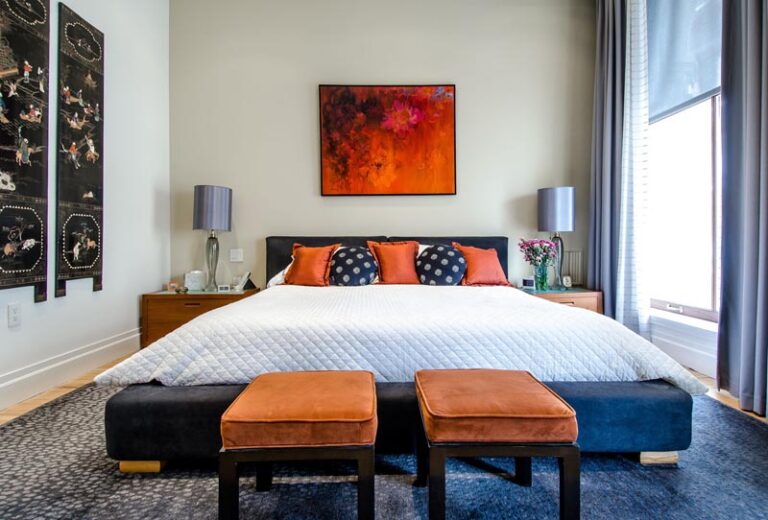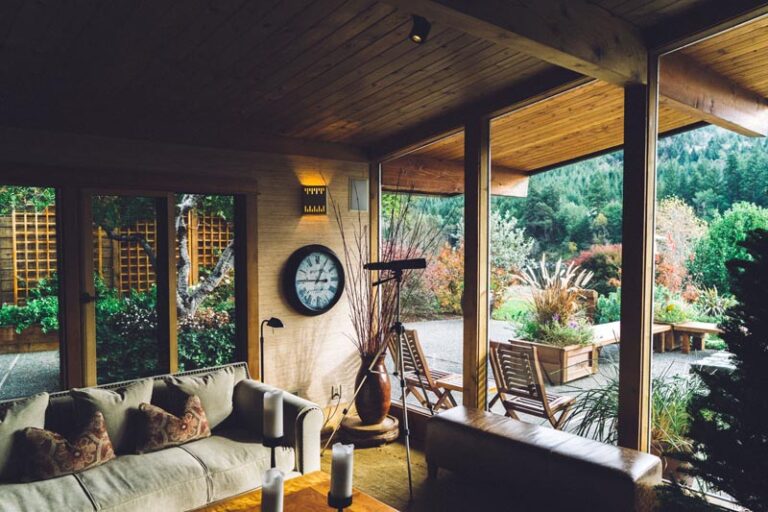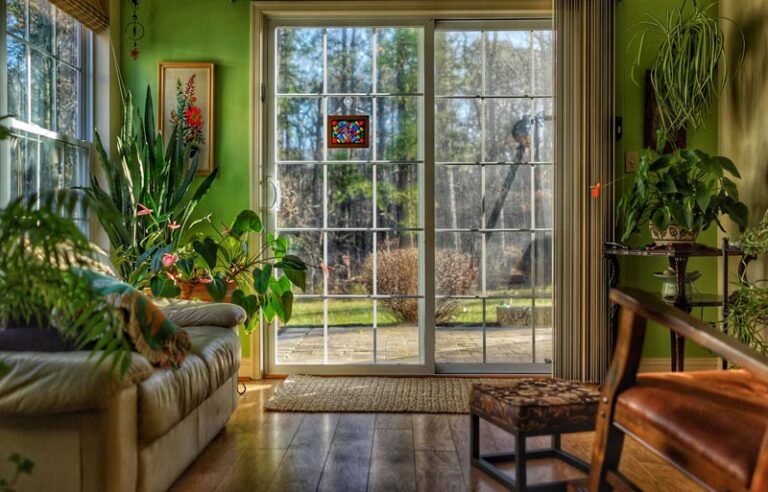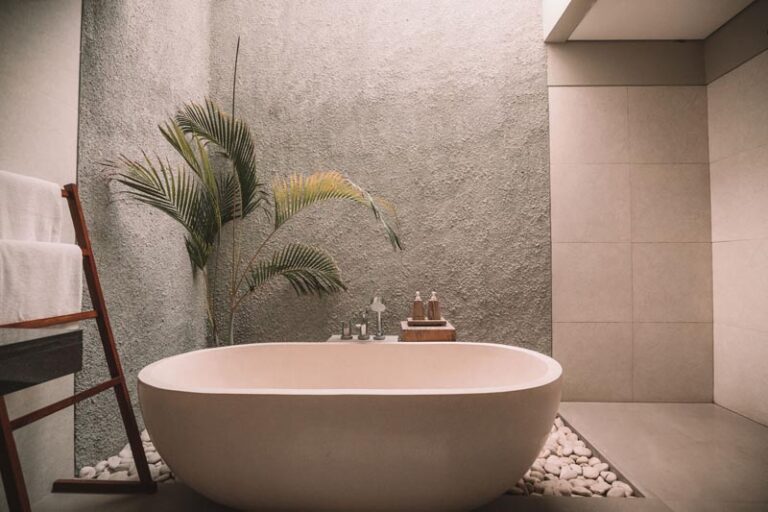“After centuries of patience, uncountable sacrifices, renunciation and penance, our Shri Ram is here”
The opening of the Ram Mandir in Ayodhya mark’s a turning point in India’s history, with divergent visions of nationhood and a call for unity among masses across the country. 22nd January, 2024 was not only marked for being an historic day of Pran Pratishtha (consecration) Ceremony of Ram Mandir but its been a day of celebration of victory and invoked the universality of the spirit of Ram that encompasses all of humanity.
The Prime Minister, Shri Narendra Modi participated in the Pran Pratishtha ceremony of Shri Ramlalla in the newly built Shri Ram Janmbhoomi Mandir in Ayodhya, Uttar Pradesh. Addressing the gathering, he exclaimed that our Ram has finally arrived after centuries.
“After centuries of patience, uncountable sacrifices, renunciation and penance, our Lord Ram is here”, PM Modi remarked and congratulated the citizens on the occasion.
Sharing his spiritual experience, the Prime Minister said that the divine consciousness inside the ‘Garbh Grih’ (inner sanctum) cannot be put into words and his body is pulsating with energy and the mind is devoted to the moment of Pran Pratishtha.
“Our Ram Lalla will not reside in the tent anymore. This divine temple will be his home now… This moment is supernatural and sacred, the atmosphere, environment and energy signify the blessings of Lord Ram upon us”, he said.
PM Modi underlined that the nation that breaks the shackles of the mindset of slavery and derives inspiration from the experiences of the past is the one which writes history. PM Modi said that today’s date will be discussed in a thousand years from now and it is by the blessings of Lord Ram that we are a witness to this momentous occasion unfolding itself.
During his 11-day anushthan, PM Modi attempted to bow before all the places where Lord Ram had set foot. Mentioning Pancwati Dham in Nashik, Thriprayar Temple in Kerala, Lepakshi in Andhra Pradesh, Shri Ranganathswamy Temple in Srirangam, and Dhanushkodi, the Prime Minister expressed gratitude for the journey from the sea to river Sarayu.
“From the sea to the Saryu river, the same festive spirit of Ram’s name is prevalent everywhere,… Lord Ram is connected to every particle of the soul of India. Ram resides in the hearts of Indians”.
The Prime Minister said “Today’s occasion is not only a moment of celebration, but at the same time it is also a moment of realization of the maturity of Indian society. For us, this is not only an occasion of victory but also of humility.”
“The construction of this temple of Ramlala is also a symbol of peace, patience, mutual harmony and coordination of Indian society. We are seeing that this construction is not giving birth to any fire, but to energy. Ram Mandir has brought inspiration to every section of the society to move forward on the path of a bright future”, he said.
The Prime Minister emphasized that the whole world is connected with the Pran Pratistha and the omnipresence of Ram can be witnessed. He said that similar celebrations can be seen in many countries and the festival of Ayodhya has become a celebration of the global traditions of Ramayana. “Ram Lalla’s prestige is the idea of ‘Vasudhaiva Kutumbakam’”, he added.
HISTORY AND CONTROVERSY OF RAM TEMPLE
The construction of the Ram Temple began in 2020 after Prime Minister Narendra Modi laid the foundation stone on August 5.
Let us trace the timeline in history since the disputes begin.
‘Temple demolished’ to make way for mosque – 1528
– According to the most popular version which finds mention in government gazettes, Mughal ruler Babur’s general Mir Baqi constructed a mosque after razing a temple at ‘Ram’s birthplace’ in Ayodhya’s Ramkot.
Dispute during British India
– Religious violence over the site of Babri Masjid in Ayodhya occurred for the first time in 1853. Under the rule of Nawab Wajid Shah of Awadh, the Nirmohis, a Hindu sect, asserted that a Hindu temple had been demolished during Babur’s era to make way for the mosque.
Ram Lalla idols inside Babri Mosque – 1949
– Idol of Lord Ram surfaces inside Babri Masjid. Mr. Gopal Singh Visharad filed a petition before a Faizabad court to worship the deity. Hashim Ansari, a resident of Ayodhya, approached the court saying the idols should be removed and it be allowed to remain a masjid. The government locked the place but priests were allowed to perform daily puja.
– Six years later, the Britishers installed a fence to partition the site into two sections. Muslims were granted permission to pray within the mosque, while the outer court was designated for Hindu use.
– In January 1885, Mahant Raghubir Das submitted a request to the Faizabad district court, seeking approval to construct a canopy on the Ramchabutra, a raised platform situated outside the mosque. However, the plea was denied.
Plea seeks restoration of property to Muslims — 1961
– A petitioner filed a suit pleading for restoration of the property to Muslims. The Sunni Central Wakf Board filed suit in Faizabad civil court declaring Babri Mosque as property of board.
Campaign launched to build Ram temple — 1980s
– A committee, led by the Vishwa Hindu Parishad party (VHP), was established with the objective of “liberating” the birthplace of Lord Ram and constructing a temple in his honour.
– Ayodhya court orders mosque to be opened for Hindus to offer prayers — 1986
Upon a plea by Hari Shankar Dubey, the district judge in Ayodhya issued an order to open the gates of the contested mosque, enabling Hindus to worship there. In response, Muslims formed the Babri Mosque Action Committee in protest.
– In compliance with the court’s directive, the government under Rajiv Gandhi ordered the unlocking of the gates of Babri Masjid.
– Prior to the court’s decision, only a Hindu priest had the authority to conduct an annual puja. Following the verdict, all Hindus were granted access to the site.
VHP lays the foundation of Ram Temple — 1989
– VHP initiated the construction of a Ram temple on the adjacent land to Babri Masjid. Justice Deoki Nandan Agarwal, former VHP Vice-President, filed a case requesting the relocation of the mosque. Subsequently, four pending suits in the Faizabad court were transferred to a special bench of the High Court.
The Rath Yatra — 1990
– Under the leadership of its then president, LK Advani, the BJP organized a national Rath Yatra from Somnath in Gujarat to Ayodhya. The primary objective of this rally was to express support for the Ram Temple agitation, which was being led by the VHP at that time.
– On October 23, 1990, then Prime Minister VP Singh granted authorization to Lalu Prasad Yadav, the Chief Minister of Bihar, to arrest LK Advani. The then BJP president was taken into preventive custody as his procession crossed the border between Uttar Pradesh and Bihar.
The mosque is demolished -1992
- On December 6, 1992 the disputed Babri Mosque was demolished by the karsevaks in the presence of leaders from Shiv Sena, VHP, and BJP. This triggered widespread communal riots throughout the country, resulting in the loss of at least 2,000 lives during the violence.
Godhra train fire and Gujarat riots – 2002
- Coach no. S-6 of Sabarmati Express carrying kar sevaks from Ayodhya to Gujarat was burnt near Godhra station. Fifty-eight people were burnt alive, leading to Gujarat riots which claimed more than 1,000 lives.
ASI conducts survey – 2003
- In 2003, the Archaeological Survey of India (ASI) surveyed the disputed site and reported evidence of a significant Hindu complex beneath the mosque. However, Muslim organizations disputed these findings, leading to ongoing disagreements regarding the historical interpretation of the site.
Allahabad HC divides the disputed site in three parts — 2010
- In 2010, the Allahabad high court delivered its judgment on the four title suits about the dispute. The High Court ruled that the disputed land should be divided into three parts: one-third allocated to Ram Lalla, represented by the Hindu Mahasabha; one-third to the Islamic Waqf Board; and the remaining third to the Nirmohi Akhara.
All three sides approach Supreme Court — 2011
– All three parties—the Nirmohi Akhara, Ram Lalla Virajman, and Sunni Waqf Board—appealed against the Allahabad High Court verdict.
– The Supreme Court stayed the HC order of splitting the disputed site in 3 parts.
Supreme Court asks government to handover land for Ram Temple construction — 2019
– On November 9, 2019, a five-judge bench of the Supreme Court issued a verdict ordering the disputed land of 2.77 acres to be transferred to a trust, to be established by the Government of India, for the construction of the Ram Janmabhoomi temple. Additionally, the court directed the government to allocate an alternative five acres of land at a different location to the Sunni Waqf Board for the construction of a mosque.
– The trust formed for the construction of the Ram temple was named Shri Ram Janmabhoomi Teerth Shetra. This trust comprises 15 members.
Foundation stone laying ceremony — 2020
– On August 5, 2020, Prime Minister Narendra Modi laid the foundation stone for the construction of the Ram Temple. He also unveiled a plaque and released a commemorative postal stamp.
BRIEF OVERVIEW OF THE CONSTRUCTION OF RAM MANDIR
The Ram temple complex, built in the traditional Nagara style are characterised by their towering spires or shikharas, intricate carvings, and symbolic representations. They have meticulous craftsmanship, as visible in the magnificent Khajuraho temples of Madhya Pradesh.
The original design for Ram Mandir was planned in 1988 by the Sompura family of Ahmedabad. However, it went through certain changes in 2020 in accordance to the Vastu shastra and the Shilpa shastras. The temple, built in an overall area spanning 71 acres, is divided into six parts, including the sanctum sanctorum and five pavilions—Gun Mandap, Rang Mandap, Nritya Mandap, Kirtan Mandap, Prarthana Mandap.
The superstructure of the temple is being constructed by using carved Rajasthan sandstone from Bansi Paharpur in Bharatpur district. The carving and erection work of the sandstones have started and approximately 1,200 skilled technicians are engaged at mines and workshops in Rajasthan as well as at the Shri Ram Temple workplace, as stated by the Trust.
The quality of the stones and the workmanship of the carving is being supervised by experts from agencies including the National Institute of Rock Mechanics (NIRM) from Bengaluru, architect CB Sompura, and implementing agencies Larsen & Toubro Ltd (L&T) and Tata Consulting Engineers (TCE).
TOTAL AREA 2.7 ACRES
Total built-up area 57,400 Sq feet
Total length of the temple 360 feet
Total width of the temple 235 feet
Total height of the temple 161 feet
Total floors 3
Number of columns in the ground floor 160
Number of columns in the first floor 132
Number of columns in the second floor 72
Number of gates in the temple 12
KEY FEATURES OF RAM TEMPLE CONSTRUCTION
- The three-storied temple is built in the traditional Nagar style with each wall measuring 20 feet. No iron is used in the construction of the temple anywhere.
- It has a length (east-west) of 380 feet, a width of 250 feet, and a height of 161 feet. The complex has a total of 392 pillars and 44 doors.
- Entry into the temple is from the east, ascending 32 stairs through the Singh Dwar. The main entrance to the temple will be the Lion Gate or the ‘Singh Dwar’, which is constructed using the Rajasthani sand pink stone in the Nagar style.
- Inside the Ram Mandir complex, there are proposed temples dedicated to Maharshi Valmiki, Maharshi Vashishtha, Maharshi Vishwamitra, Maharshi Agastya, Nishad Raj, Mata Shabri, and the revered consort of Devi Ahilya.
- At the four corners of the complex, there are four temples – dedicated to Surya Dev, Devi Bhagwati, Ganesh Bhagwan and Bhagwan Shiv. In the northern arm is a Mandir of Maa Annapurna and in the southern arm is a Mandir of Hanuman ji.
The Prime Minister during the inaugural ceremony said that the future is dedicated to successes and accomplishments and the grand Ram Temple will be a witness to the progress and rise of India. “This grand Ram temple will become a witness to the rise of Viksit Bharat”, the Prime Minister said.
“This is India’s time and India is going to move forward. After waiting for centuries we have reached here. We all have waited for this era, this period. Now we will not stop. We will continue to reach the heights of development”, he concluded.
Shri Ram Mandir Construction Committee Chairperson Nripendra Mishra has said that areas surrounding Ayodhya has witnessed a surge in economic activities after the inauguration of the Ram temple and the city may undergo expansion similar to the National Capital Region.
“As money flows in, people will have many opportunities, and along with these opportunities, there will be increased investments in the area. We have received 16 applications for building hotels, and a plan for a smart city is also in progress,” he said.
FMCG companies and food services chains are making a direct route for Ayodhya as they are expecting 8-10-fold surge in tourism and floating (visiting) population of the city amid its global branding and facelift.
“Anticipating substantial surge in consumer demand following the consecration of the Ram temple, we are strategically setting up a greenfield plant in Ayodhya,” Angelo George, CEO of India’s largest mineral water company Bisleri International. He said the plant will feed into demand from surrounding markets in Uttar Pradesh.
From leading 5-star brands like the Taj, Radisson and ITC Hotels to budget players such as OYO, companies are lining up to open new hotels.
Such a large number of visitors will turn Ayodhya into a powerhouse boosting the business and economic in the entire region.
Redevelopment of Ayodhya as per Master Plan 2031 will be completed over 10 years with an investment of over Rs 85,000 crore to upgrade the holy city to meet the requirement of a daily footfall of around 3 lakh after the inauguration of the Ram Temple.
Architect and urban planner Dikshu Kukreja, whose firm has created the vision document for the entire Ayodhya, said the design vision includes all modern amenities that a world-class city in the 21st century must have and at the same time celebrate the history and culture of this ancient place.
Development and infrastructure projects have been categorised into eight broad themes –Aesthetic Ayodhya, Clean Ayodhya, Efficient Ayodhya, Accessible Ayodhya, Experiential Ayodhya, Modern Ayodhya, Cultural Ayodhya and Healthy Ayodhya.
The Ayodhya Ram Temple is considered to be an important pilgrimage sites for Hindus. It is believed to be the birthplace of Lord Ram and the construction of the temple is seen as a symbolic victory for the Hindu community, who had been fighting for the temple’s construction for decades. The temple inauguration holds significance for Hindus worldwide as it is a milestone reached after the successful culmination of a decades-long movement for the construction of the temple.






